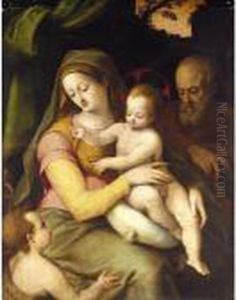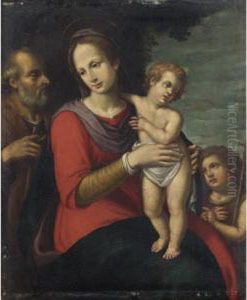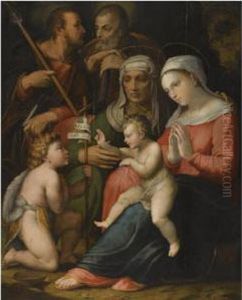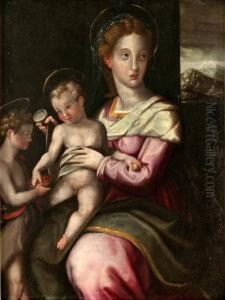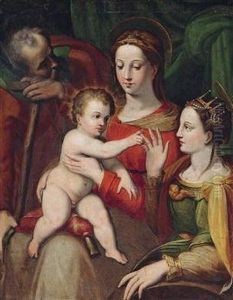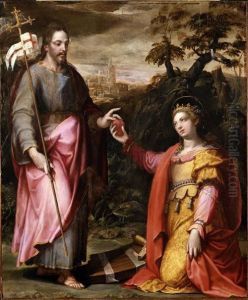Giovanni Battista Ii Ramenghi Il Bagnacavallo Paintings
Giovanni Battista Ramenghi, known as Il Bagnacavallo Jr. or Il Bagnacavallo Giovane, to distinguish him from his father Giovanni Battista Ramenghi Il Vecchio, was an eminent Italian painter of the Renaissance period. Born in 1484 in Bagnacavallo, a town from which he took his nickname, he was an influential figure in the development of the Bolognese School of painting. His work is characterized by its delicate execution, vibrant colors, and the emotional depth of his religious subjects.
Il Bagnacavallo received his early training from his father before moving to Bologna to study under the guidance of prominent artists of the time. Among his influences were Raphael and the Carracci family, whose works significantly shaped his artistic development. Bagnacavallo's style reflects the transition from the High Renaissance to the Mannerist period, displaying both the idealized beauty typical of Raphael's work and the more expressive qualities characteristic of Mannerism.
Throughout his career, Bagnacavallo worked on numerous commissions for churches and noble families in Bologna and its surrounding areas. His frescoes and altarpieces are celebrated for their spiritual intensity and technical proficiency. Notable works include his contributions to the decoration of the Cathedral of Bologna and his paintings in the Church of San Michele in Bosco. Bagnacavallo's influence extended beyond his lifetime, impacting the next generation of Bolognese painters, including the young Guido Reni.
Il Bagnacavallo's death in 1542 marked the end of an era in Bolognese art. However, his legacy lived on through his contributions to the Italian Renaissance and his influence on the artists who followed. Today, his works are preserved in various museums and churches, serving as a testament to the enduring appeal of his artistic vision.
